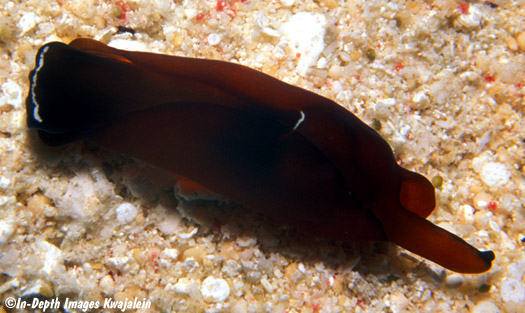
We see this nearly uniform black or white spotted Mariaglaja often on Kwajalein Atoll lagoon reefs and in quarries at depths of 2 to about 20 meters. It frequently lives in approximately the same areas as Chelidonura hirundinina, but not in areas usually frequented by Mariaglaja inornata, although when disturbed it will secrete an orange cloud of fluid much like that of M. inornata. Over a span of many months, one particular algae patch was home to more than 50 specimens of all sizes, but they seemed to fade away after a mild El Niño and higher than normal water temperature in the fall of 2009.

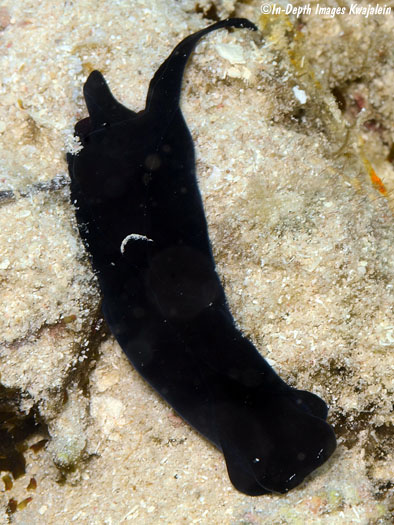
The specimen immediately below was one of several found by John and Lynette Flynn at Rongelap Atoll.
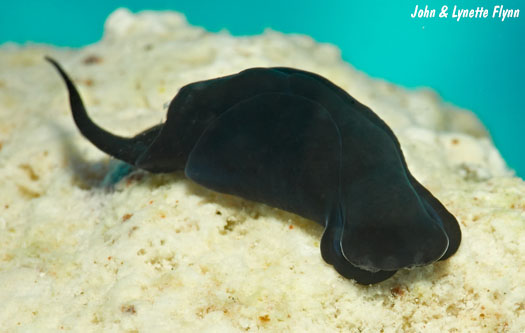
Orange fluid, probably a defensive chemical, secreted by a specimen that was disturbed.
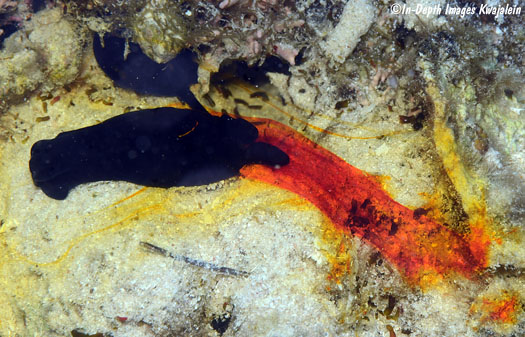
The little dark spots just above this one's head (left side) and over near the left margin of the photo are small acoel flatworms that probably constitute the diet of this Mariaglaja.
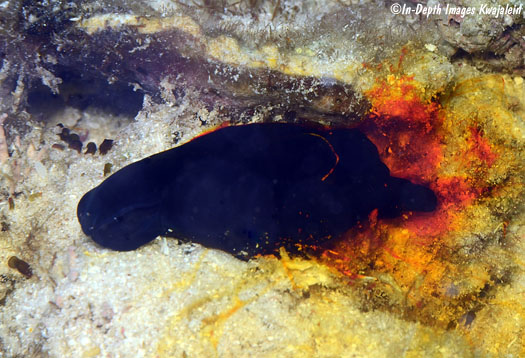
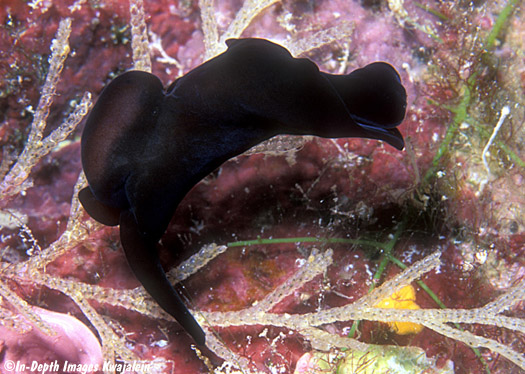
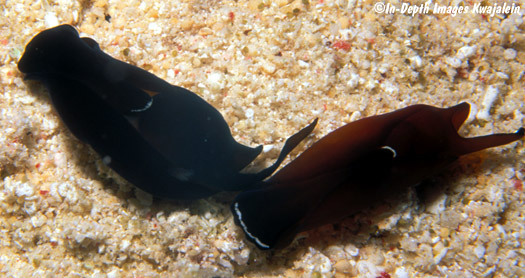
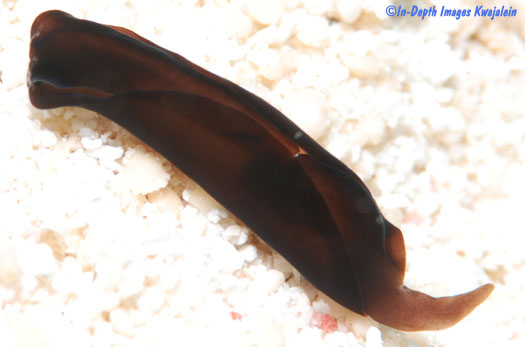
Specimens we assume to be the same species occasionally have some red markings around the anterior end and on the tips of the tail.
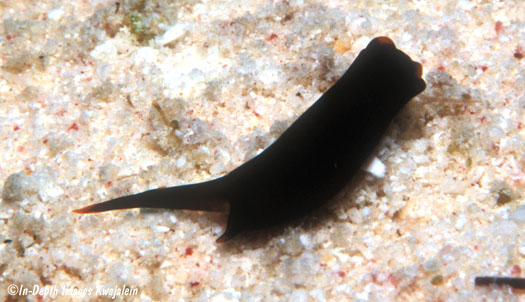
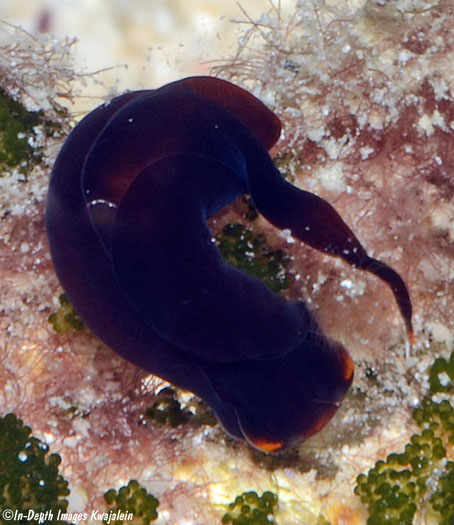
Sometimes we see them without the long left tail typical of Mariaglaja, shaped more like a species of Philinopsis. These secrete the same orange fluid when disturbed and we think they are variants.
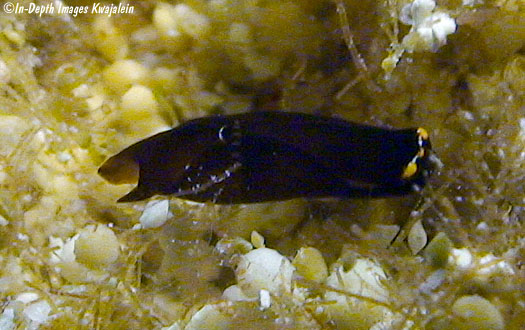
This white-speckled Mariaglaja has been found on lagoon sandy reefs at depths of about 8m in Kwajalein Atoll. The individual in the first three photos was found 13 October 2008 and measured about 14mm in length. Two specimens were observed at that time, and they were among a larger group of all black Mariaglaja tsurugensis scattered over an area of a few dozen square meters. When disturbed, it secretes orange fluid much like that other species and could be a color form of that species. While the several specimens we have found of this speckled variety seem more stout and robust and their distinct white speckling gave them a much different appearance than our more typical black M. tsurugensis, they do seem to fall into the range of variation of this species.
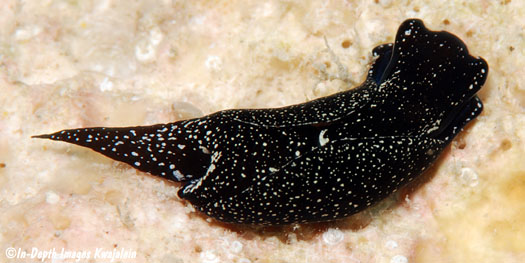
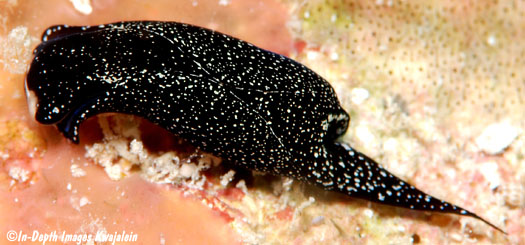
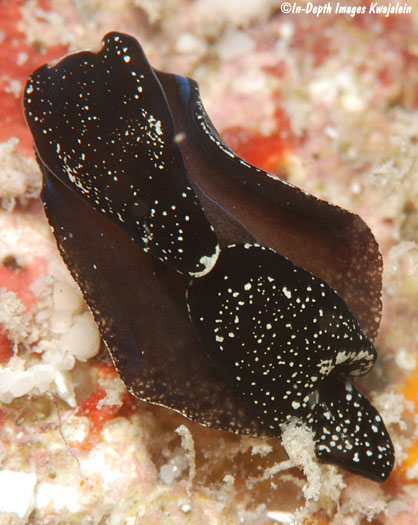
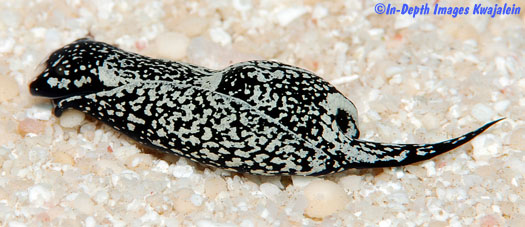
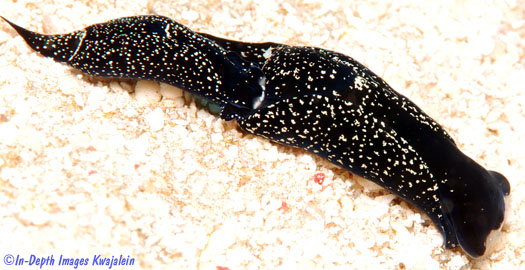

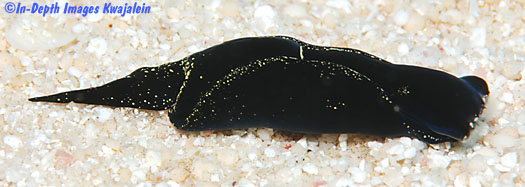
Created 28 January 2007
Updated 6 January 2022